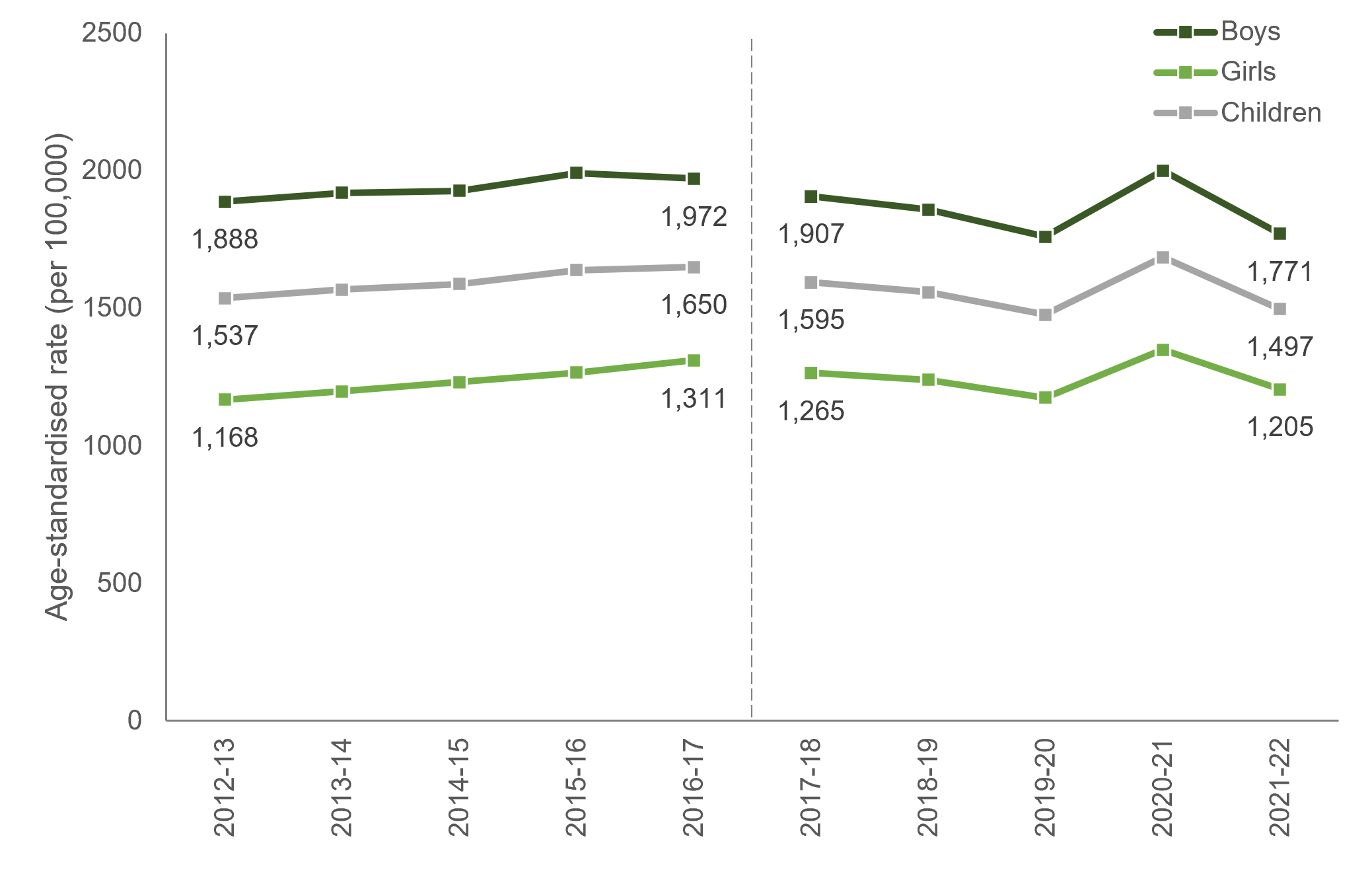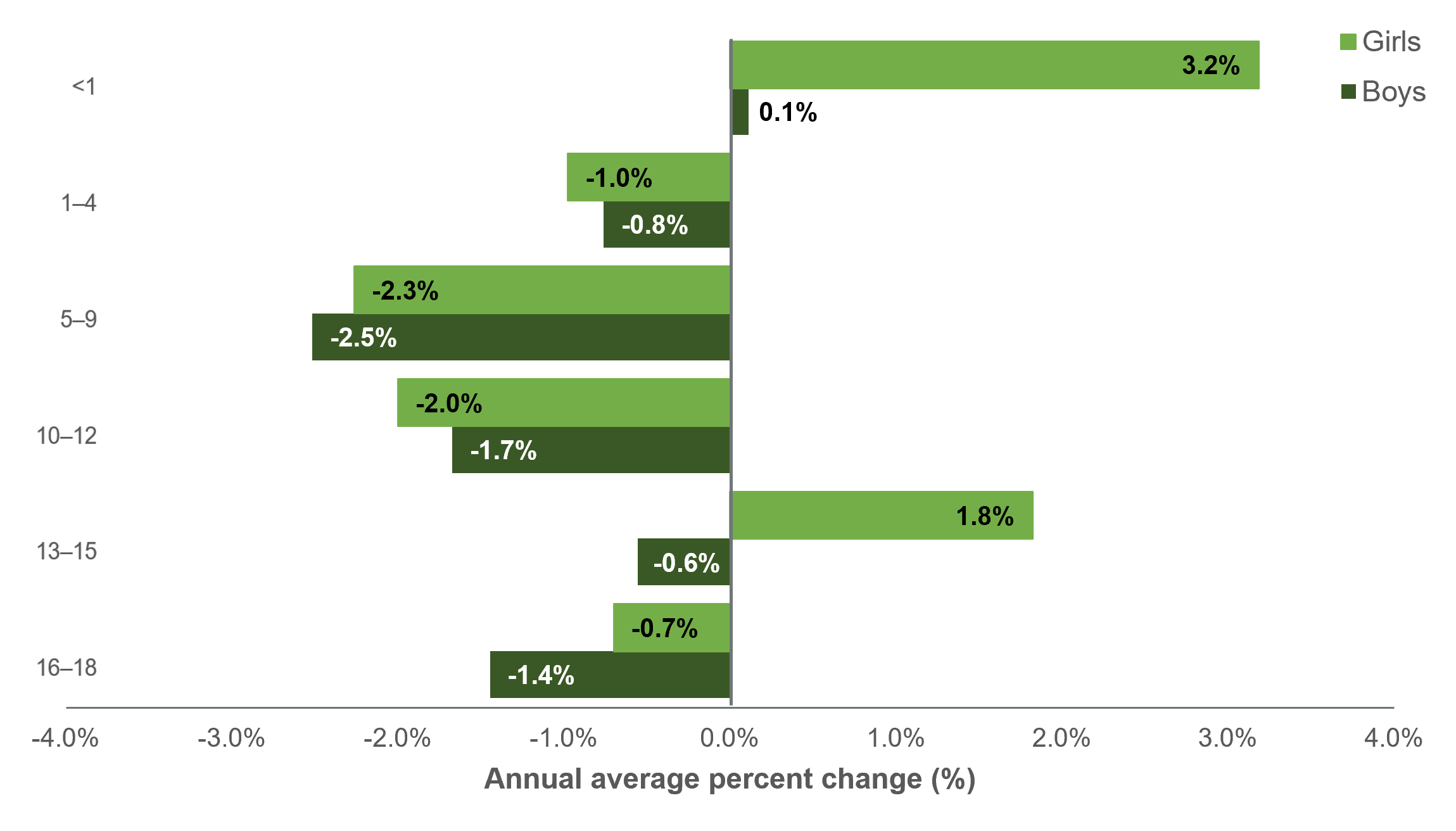Hospitalisations over the past decade
In the 5 years between 2012–13 and 2016–17, both boys and girls experienced an overall increase in the age-standardised rate of injury hospitalisations.
The age-standardised rate of injury hospitalisation among children and adolescents over the past 5 years has generally decreased. The 5.3% drop in 2019–20 is likely due to the impacts of COVID–19 restrictions. Following a 14% spike in rates between 2019–20 and 2020–21 (from 1,477 to 1,686 per 100,000), rates returned to trend in 2021–22 (1,497 per 100,000) (Figure 17).
Figure 17. Age-standardised rate (per 100,000) of injury hospitalisations among children and adolescents, by sex, Australia, 2012-13 to 2021-22

Notes:
- Rates are age-standardised per 100,000 population
- Only includes hospitalisations where the patient was between 0 and 18 years of age.
- Persons includes records where the patient sex was intersex, indeterminate or missing.
- Break in series between 2016–17 and 2017–18 – see technical notes for more information.
Sources: AIHW National Hospital Morbidity Database (NHMD) and ABS National, state and territory population.
Girls aged under 1 and girls aged 13–15 have seen an average annual increase over the past 5 years (3.2% and 1.8% respectively). All other groupings by age and sex have either experienced an average annual decrease or remained consistent (Figure 18). The 5–9 age group has seen the largest decrease over this time period – 2.5% decrease for boys, and 2.3% decrease for girls.
Figure 18. Injury hospitalisation average annual change (%) between 2017–18 and 2021–22, by age and sex, Australia, 2021–22

Notes:
- Average percent change over time is calculated on age-standardised rates for the periods after the break in time series for 2017–18 to 2021–22.
- Only includes hospitalisations where the patient was between 0 and 18 years of age, and where sex was not intersex, indeterminate or missing.
Sources: AIHW National Hospital Morbidity Database (NHMD) and ABS National, state and territory population.


